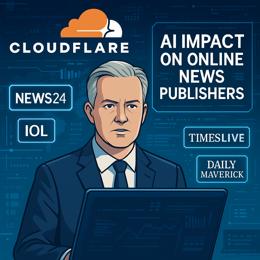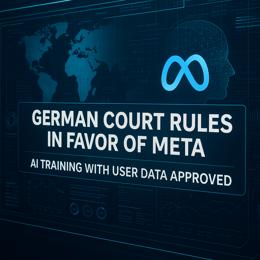Image created by AI
The Imperative of Measuring AI Prediction Risks in Healthcare
The integration of Artificial Intelligence (AI) in healthcare has opened a cornucopia of possibilities for enhancing patient care and diagnostic accuracy. However, as AI systems become more prevalent, the assessment of their performance risk, especially in critical applications such as diagnostic predictions, cannot be overemphasized.
Imagine a scenario where Tinyiko, a resident of Duthuni Village, walks into Elim Hospital with a medical emergency. The on-duty nurse, Thuso, without a doctor immediately available, resorts to an AI system to determine if Tinyiko suffers from a pulmonary embolism—a potential life-threatening condition. However, the confidence level attached to an AI system's prediction, say, an 80% assurance, demands consideration beyond its mere implementation. It brings forth a compelling discourse on the quantification and communication of AI prediction risks, a conversation central to the credibility and ethical deployment of AI in healthcare.
The ability of AI systems to exceed the diagnostic accuracy of humans has increased with the advent of massive data analyses and computational advancements. Simon Scurrell's AI prediction model in 2007, which I co-developed, serves as an early example of this thriving domain, showcasing our forward march toward integrating these systems into practical applications.
Yet, what remains a growing concern is the magnitude of potential errors and their associated risks. The healthcare sector magnifies these risks given their direct impact on patient outcomes—ranging from misdiagnoses to delayed treatments that could significantly alter a patient's course of recovery.
Transparent access to AI predictions, including knowledge of their risk assessments, allows not only end-users but also stakeholders to maintain a level playing field where informed decision-making reigns supreme. Endorsing Bayes' Theorem for its probabilistic and risk quantification methods illuminates a pathway to achieving the transparency required for such critical applications. This theorem ingeniously capitalizes on prior information and evidence to enhance predictive accuracy, an approach I applied in AI systems for aircraft structures in 2001 and been expanded upon by others across various sectors.
Yet, despite the commendable efficacy of Bayesian methods in risk quantification, its implementation necessitates significant computational resources—a challenge we tackled through efficient approaches developed by experts such as Ilyes Boulkaibet and Sondipon Adhikari in 2016, and further in our 2023 book on a related method for machine learning.
Beyond technicality lies the question of governance and policy—how do we construct a framework that mandates the inclusion of AI prediction risk quantification? Policymakers bear the onus of implementing regulations to ensure ethical development and deployment. Developers and organizations should integrate this quantification in AI development cycles and transparently disclose pertinent information to the public.
Regulatory measures must guarantee that AI systems satisfy stringent safety criteria prior to their implementation in healthcare settings. In Tinyiko's case, only with measured AI prediction risks can healthcare professionals balance AI insights with clinical expertise, thus fostering an environment where patient care is paramount.
Concluding, the pursuit of balance between the benefits of AI and the importance of managing its risks is an ongoing journey—one that should strive for equitable, socially conscious and ethically underpinned technology adoption across all spheres, particularly in critical sectors such as healthcare.










